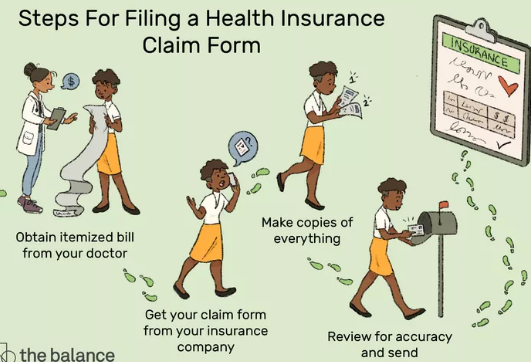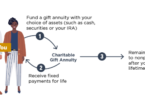Donating Your Unused Health Insurance Benefits to Support Those in Need
Health insurance can sometimes lead to savings—whether from lower-than-expected medical expenses, unused benefits, or rebates—allowing policyholders an opportunity to give back to their communities. Donating unused health insurance benefits can be a meaningful way to support those in need, especially in areas of healthcare access, medical research, and health-related charitable causes. Here’s how you can use your unused health insurance benefits to make a difference.
1. Donating Health Insurance Premium Rebates
Health insurance companies often issue premium rebates when they spend less than anticipated on healthcare services for policyholders. These rebates can be a perfect opportunity to donate directly to charity.
- How it works:
- If your insurance company issues a rebate or refund, you can donate all or part of the amount to a health-focused nonprofit.
- Organizations working on healthcare initiatives, such as free clinics, mental health awareness, or medical research, are ideal recipients.
- Impact:
- Helps fund healthcare initiatives, especially in underserved communities.
- Provides tax-deductible charitable contributions.
2. Redirecting Unused Benefits to Charitable Causes
Some health insurance plans offer unused benefits, especially in the form of preventive care services or health and wellness programs. Instead of letting these benefits expire or go unused, they can be redirected to help others.
- How it works:
- If you don’t use your health insurance benefits for preventive services (like annual checkups, screenings, or vaccinations), consider donating these benefits by working with a nonprofit organization.
- Some nonprofits work with insurance providers to offer free health services to low-income individuals, and you can contribute by enabling these services.
- Impact:
- Supports people who cannot afford basic healthcare services.
- Promotes health and wellness in communities that lack resources.
3. Donating HSA Funds to Charitable Organizations
If you have a Health Savings Account (HSA), you can contribute to a charity with your unused funds, either directly or by freeing up other funds to make donations.
- How it works:
- While HSAs are designed for personal medical expenses, some individuals withdraw funds from their accounts (tax penalties apply for non-medical withdrawals) to make charitable donations.
- Alternatively, HSA savings can be used to cover medical expenses, which frees up your regular income for charitable giving.
- Impact:
- Provides tax-efficient support for health-related charities.
- Helps fund important medical research or community health projects.
4. Contributing Through Insurance Company Charitable Programs
Some insurance companies run corporate social responsibility (CSR) programs that allow policyholders to participate in charitable giving through their health insurance plans.
- How it works:
- Many insurers have partnerships with charities and will match policyholders’ donations or allow customers to direct their premiums or benefits to charitable causes.
- Look for opportunities where your insurance provider allows you to allocate a portion of your benefits to medical aid programs or community health services.
- Impact:
- Amplifies your donation with insurer matching contributions.
- Provides an easy way to support charity through your existing insurance policy.
5. Donate Insurance Premium Savings to Nonprofits
If you’ve reduced your health insurance premiums by switching to a more cost-effective plan or by not reaching your deductible, you can use the money saved to make a contribution to a nonprofit.
- How it works:
- Once you’ve saved on premiums, reallocate a portion of the savings to support healthcare charities or organizations that provide medical care to underserved communities.
- You can use the savings from choosing a high-deductible plan, for instance, to support low-income clinics or medical research.
- Impact:
- Converts savings into valuable contributions that can make a tangible difference.
- Supports initiatives that increase healthcare access for vulnerable populations.
6. Partnering with Local Healthcare Charities to Offer Unused Benefits
Some local healthcare charities or community health centers may work with people to provide services using unused health insurance benefits.
- How it works:
- Contact local health clinics, hospitals, or community organizations that offer free or low-cost services to those in need and inquire if they accept unused health insurance benefits.
- For example, you can direct unused funds from wellness programs or preventive services to help others access medical care.
- Impact:
- Helps ensure that essential healthcare services reach those who cannot afford them.
- Makes a direct impact by providing people with the care they need but may not have access to.
7. Donating Through Employer-Sponsored Health Insurance Programs
Some employers offer charitable donation matching programs tied to their employee benefits, including health insurance. You can take advantage of these programs to amplify your charitable giving.
- How it works:
- If your employer offers a matching donation program, you can donate your savings (such as unused benefits, rebates, or even part of your health savings account) to a qualified charity, and the company will match the donation.
- You can also suggest health-related charities or healthcare access initiatives for employer donations.
- Impact:
- Doubles the contribution through employer matching.
- Increases the reach and impact of your donation while supporting health-focused causes.
8. Setting Up Charitable Giving Through Life Insurance Benefits
If you have a life insurance policy, you can also donate your life insurance benefits (either directly or through a designated charitable beneficiary).
- How it works:
- Name a charity as the beneficiary of your life insurance policy, allowing the charity to receive the death benefit.
- This is an impactful way to use your life insurance policy to make a long-term difference for health-related causes.
- Impact:
- Provides a large, tax-advantaged donation to a health-focused nonprofit upon your passing.
- Helps ensure that your charitable legacy lives on through healthcare support initiatives.
Tax Benefits of Donating Unused Health Insurance Benefits
- Tax-Deductible Contributions
- Donations made from your insurance savings or benefits can often be tax-deductible, which reduces your overall taxable income.
- Health-Related Tax Deductions
- Certain medical expenses that you pay out-of-pocket or through unused benefits may qualify for tax deductions if they are directed toward qualifying charitable causes.
- Employer Tax Benefits
- If your employer matches donations made from insurance savings, they may receive tax incentives as well.
Considerations When Donating Health Insurance Benefits
- Check with Your Insurance Provider
- Confirm that your insurance provider allows donations of unused benefits, rebates, or premium savings.
- Understand Tax Implications
- Consult with a tax professional to understand how donating unused health insurance benefits may affect your tax situation.
- Verify Charity Status
- Ensure that the charity you’re donating to is a registered 501(c)(3) nonprofit to ensure your contribution is tax-deductible.
- Plan Ahead
- Set a plan for how you can regularly donate unused benefits, rebates, or savings from your insurance premiums.
Conclusion
Donating unused health insurance benefits is a powerful way to give back to the community while making a positive impact on healthcare access, research, and wellness. Whether it’s through rebates, savings, or unused benefits, you can turn healthcare savings into valuable contributions that help those in need. By planning and strategically redirecting these resources, you can support nonprofits, healthcare initiatives, and community organizations that are making a difference in people’s lives.
Also Read :







Leave a Comment